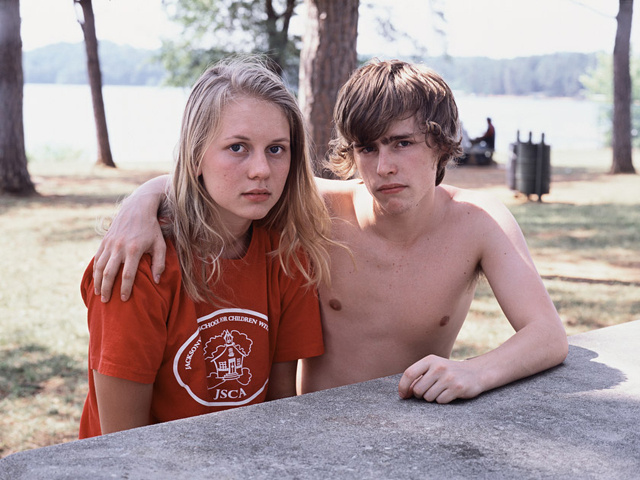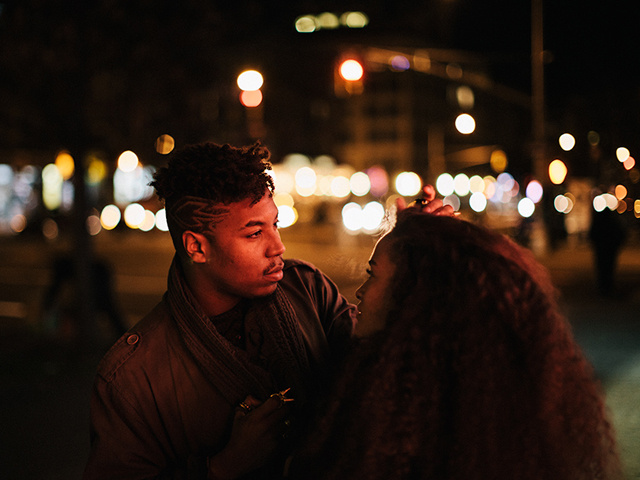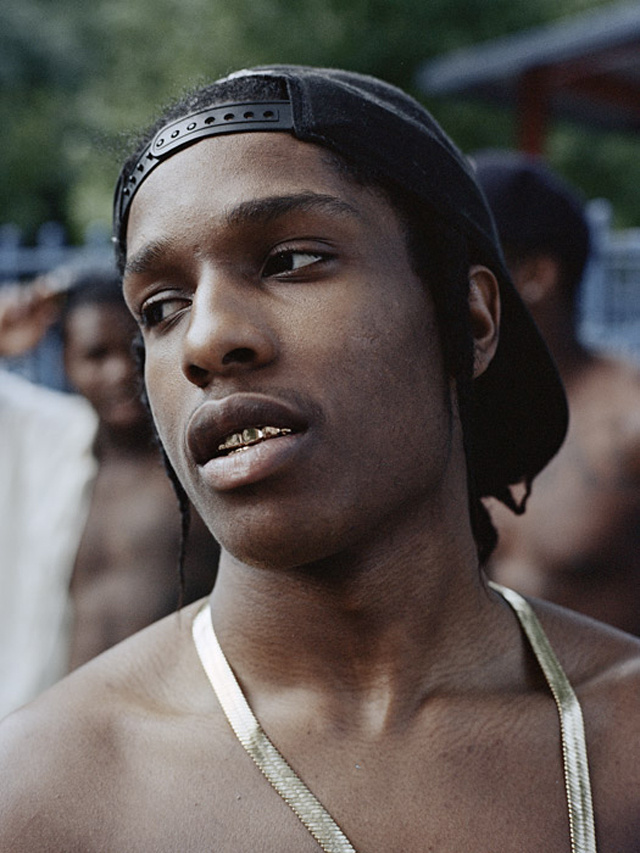
Photos by James and Kara Hayes
I almost made it through my 30s without a single speeding ticket. Then came New Orleans’s traffic cameras. My neighborhood, Bywater, suffered a post-Katrina wave of gentrification that brought with it the government’s all-seeing eye, though none of us asked for it. A camera was set up on Chartres Street, a riverfront lane with houses along only one side of it and, aside from a high school at one end, exactly two kids for a mile’s length. Chartres, one of the few smoothly paved streets in a city known for its potholes, begs you to exceed its 25 MPH limit, but living near the camera made us all very cautious—the only way for me to deal with this speed trap was to drive with the cruise control on at 25 MPH and my foot off the accelerator.
Despite my efforts, my wife and I racked up almost $1,000 in tickets and late fees in that first year before finally we learned to just avoid Chartres. In the meantime we were too poor to pay even a single $110 ticket, so late fees were tacked on. Finally, the city put a boot our car while my two-year-old daughter and I were busy watching the Barkus dog parade during Mardi Gras. I stood on the side of the road trying not to curse with my toddler in my arms, waiting for the cops to come drain our meager savings account and remove the boot.
“They put [traffic cameras] where they think people aren’t gonna fight ‘em,” said Louisiana State Representative Jeff Arnold, who has made it his mission to bring down New Orleans’s camera scam. “They have them outside some of the most prestigious private schools like McGehee and Trinity, but you don’t have them in front of McMain [a public high school] on Claiborne. They place them less for safety and more for returns. The cameras are about the best return on the dollar.”
Though the first traffic cameras were first installed in 2008, during the tenure of now-disgraced mayor Ray Nagin, his successor, Mitch Landrieu, has continued to plant more robot eyes in the ground while insisting they’re about safety, not revenue. A picker of only the lowest-hanging fruit, Landrieu hasn’t solved the city’s serious issues of poverty and violence (in 2013, the murder rate dropped around 10 percent, though the rate of gun violence remained steady, which just means more gunshot victims are surviving), but he has added roughly 10 percent to the city’s annual budget (somewhere between $12 and $18 million), in part by burdening the already poverty-stricken citizenry with more ways to get tickets. The camera program has been such a financial success for the city that at this point, losing the revenue would be disastrous for the budget.
And yet locals continue to see no increase in city services. “We have so much revenue coming in from the cameras, plus [the 2013] Super Bowl, Sugar Bowl, [and] Mardi Gras,” said Arnold, “but then we’re told we have to cut this department and that department. They say they are going to dedicate a portion to police. But then if they do, they then take a million from the police department and give it to the mayor’s office, so in the end that really doesn't do anything.”
Arnold stressed that New Orleans suffers from a lack of officers patrolling the streets, and cameras are no substitute. “If you use a police officer to write tickets, when they pull someone over they might see that illegal gun sticking out of the back seat, [or] you catch people who have a warrant out for their arrest, something that a traffic camera will never catch," he said, adding that cameras "aren't doing real police work.”
Arnold is also perturbed that much of the work the cameras do create isn’t going to locals. “You get a ticket in New Orleans from company in Arizona,” Arnold explained, “then if you pay it, you pay to a company in Ohio. If you don’t pay, then you have a law firm in Texas who calls you and tries to collect. We outsource to three different states, and then we only get about half the money that’s charged. Do we not have people who can do all this in Louisiana?”

The number of tickets—and therefore the revenue—generated by New Orleans’s cameras has decreased as citizens learn which areas to avoid. In response, Landrieu has upped the number of cameras, including 11 more added in 2012. That despite the fact that there's little evidence that cameras make the streets safer—while City Hall wasn’t forthcoming with accident statistics, reports have shown that cameras actually increased fender-benders in Los Angeles, D.C., Portland, Philadelphia, and elsewhere. In 2005, the North County Times in Oceanside, California, reported an 800 percent increase in rear-end accidents at one intersection caused by brake-slammers attempting to avoid tripping the cameras during the first few months of the cameras’ operation.
Meanwhile, New Orleans continues to ignore research showing that measures like lengthening yellow lights by one or two seconds or adding a brief interval when all of an intersection’s lights remain red for a couple seconds vastly improve safety at no cost.
Garden District attorney Owen Courreges has publicly railed against the cameras via his column in the local news site Uptown Messenger, often drawing attention to instances of petty corruption. In March 2012, after the city announced that it would forgive all traffic camera tickets issued to city employees, claiming it would be unfair to go after city employees when the city had not laid out a clear policy, Courreges wrote, “The official position of the Landrieu administration is that city employees are entitled to the presumption that they are exempt from certain laws.”
Across the country, corruption follows traffic cameras the way cops used to follow speeders, and New Orleans is no exception. In 2011, it came out that New Orleans Police Superintendent Ronald Serpas’s son-in-law, as well as Serpas’s bodyguard and three of his top commanders, were being paid on the side for reviewing traffic tickets when they were off-duty. Serpas’s subordinate, Commander Edwin Hosli, was even more ballsy, starting his own ticket-reviewing company in violation of department rules. The Office of Inspector General, the FBI, and the New Orleans Police Department’s Public Integrity Bureau launched a probe into Hosli’s maneuvers, but, naturally, decided not to press charges.

The way the system is supposed to work, after a traffic camera snaps a photo of your plate a human officer reviews the ticket before mailing it out. And yet many clearly misidentified vehicles are still fined—it’s the car, not the resident, who receives the ticket. Fighting a ticket is nearly impossible: you have to first pay at least a $50 appeal fee, which is non-refundable even if you win your case. (That fee goes into a fund that helps pay for the cost of the city’s appeal against you if you somehow win your initial case.) You then move on to the New Orleans Administrative Hearing Center, which claims to provide a neutral, objective hearing based on evidentiary procedures outlined in the Administrative Procedures Act, but is well known as a kangaroo court.
“It’s essentially impossible to get your money back, even if the ticket is bogus,” Owen Courreges wrote in 2012. “The hearing officer is both judge and prosecutor, but is legally required to be impartial and provide a meaningful administrative review… In my experience, these hearing officers do not have any knowledge regarding the operation of the cameras, and will not admit any evidence regarding their operation or accuracy. They defer entirely to American Traffic Solutions [ATS, the corporation that owns New Orleans’s cameras].”
Some cities have decided to put an end to traffic cameras in recent years. In 2011, the city councils of Los Angeles and Houston voted overwhelmingly to shut the electronic eyes off—in LA, it was in response to audits that showed the program wasn’t making any money, while Houston was responding to a 2010 referendum that saw voters reject the cameras en masse. (Houston had to deal with a lawsuit from ATS, which operated its cameras, and wound up settling with the company for $4.8 million.) In Florida, judges have questioned the constitutionality of traffic cameras because they shift the burden of proof by forcing accused speeders to show that it wasn’t them driving their cars in order to get themselves acquitted.
New Orleans’s neighboring Jefferson Parish began the process of shutting down its cameras after it came out that lobbyist and former New Orleans City Council member Bryan Wagner was receiving commissions from fines brought in by Redflex Traffic System’s cameras. Still, despite all this, the Landrieu administration isn’t going to let voters decide the fate of the city’s camera program.
“Redflex and ATS have powerful lobbying forces, so it’s been hard to break through,” said an exasperated Jeff Arnold. The state representative has reached the end of his term limit and won’t run for another position, but he hopes someone else will continue his fight, possibly by hitting the powers that be in the wallet.
“Attack the cameras from an angle that will make them not profitable,” he suggested. “If they aren’t profitable then [city officials] won’t have them because it’s not about safety, it’s about money.”
Michael Patrick Welch is a New Orleans musician, journalist, and author of books including The Donkey Show and New Orleans: the Underground Guide. His work has appeared at McSweeney's, Oxford American, Newsweek, Salon, and many other publications. Follow him on Twitter here.




































